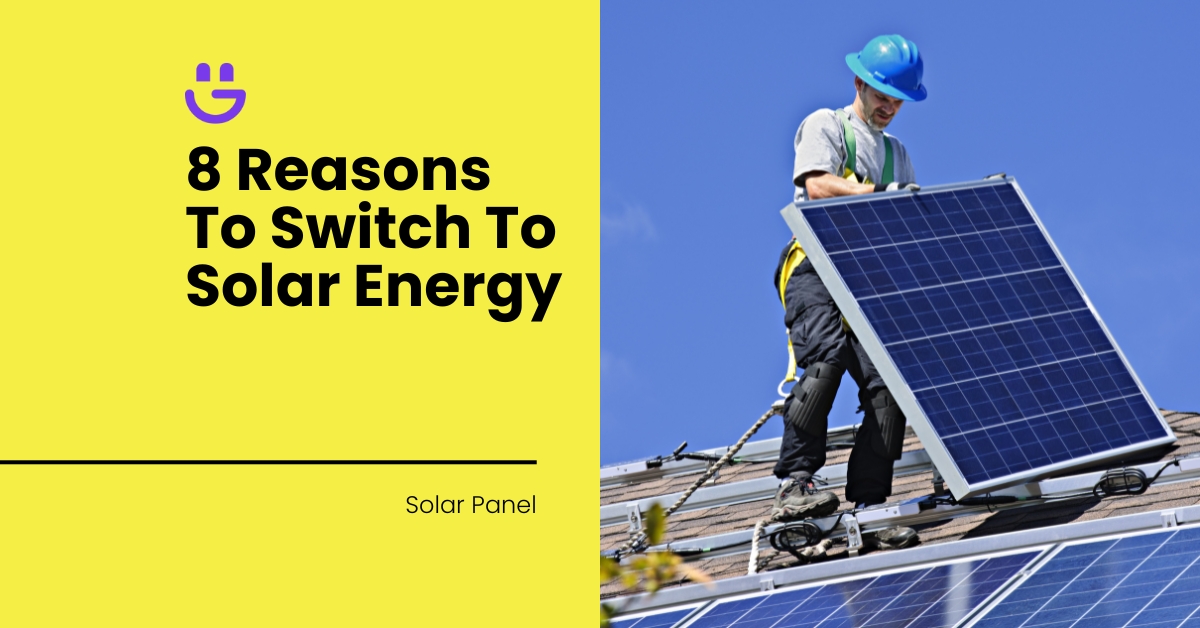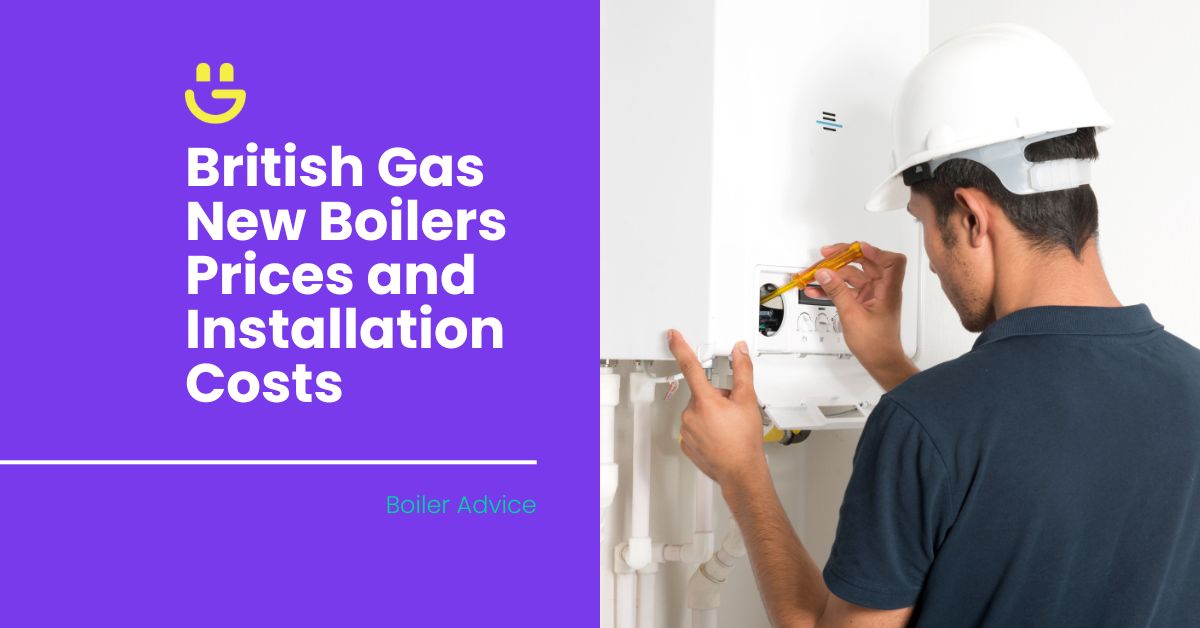Last Updated on November 14, 2025
Yes, you can install solar panels on both sides of a roof provided both sides receive sufficient sunlight throughout the day. Solar panels work by capturing the sun’s energy to generate electricity that operates appliances, charges your EV, or even that you can sell back to the grid.
We know certain parts of the UK get more sunshine than others. And a south-facing roof will receive more solar energy than a north-facing roof. Your roof’s size, layout, tilt, and structure all influence how effectively it harnesses sunlight and aids electricity production. A professional assessment by a certified solar panel installer will advise the best solar array for your roof.
In this guide, we’ll answer the question, “Can you put solar panels on both sides of your roof?” in more detail. We’ll discuss the rationale, costs, and installation process, as well as look at alternatives to installing solar panels on both sides of your roof.
Contents
- 1 Why You Should Install Solar Panels on Both Sides of Your Roof?
- 2 How Are Solar Panels Installed On Both Sides of a Roof?
- 3 How Long Does It Take To Install Solar Panels On Both Sides Of A Roof?
- 4 How Much Does it Cost to Install Solar Panels on Both Sides of Roof?
- 5 Get a Solar Panel Installation Quote Today
- 6 FAQs
- 7 Our Verdict
Why You Should Install Solar Panels on Both Sides of Your Roof?
You should install solar panels on both sides of a roof to increase the property’s solar energy production. For example, one side of the roof may not deliver all the power your property requires.
Roof orientation
In the UK, a south-facing roof is the best orientation for a solar system. It captures the maximum amount of sunlight as the sun moves from the east to the west. All else being equal, a south-facing roof generates more electricity than roofs facing other directions.
The following roof directions are also effective:
- An east or south-east-facing roof receives sun in the morning.
- A south-west or west-facing roof receives sunlight later in the day.
It’s common to see solar panels installed on both sides of a roof with an east-west axis. This arrangement aims to tap the sun in both the early morning and late afternoon/summer evening. In properties with multiple roof sections, panels on the south, east, and west elevations are common.
North-facing roofs and north-facing panels are not ideal for solar.
Shade
Shade casts shadows over the panels and greatly reduces their efficiency.
While trees can be trimmed or even cut down to reduce shade, many roofs lie in the shadow of neighbouring buildings. Working around the challenge of shade may mean installing some panels on one part of the roof and the rest on the other side.
Roof size and structure
Chimneys, vents, and skylights potentially limit the space available for solar panels. If one side of the roof can’t accommodate all the panels, fitting half of them on the other side may be the answer.
Solar panels need a sturdy foundation. To avoid placing too much weight on a section of the roof and compromising its structural soundness, it may be necessary to split the solar panel system between two sides – effectively spreading the load. To learn more, read our article on how much solar panels weigh.
Angle
The ideal roof angle for solar panels is between 25 and 45 degrees. If the roof’s angle is less than ideal, panels on both sides can be considered to improve effectiveness.
Location
The South East and South West enjoy more sunshine than the north of England and Scotland. A south-facing roof in Plymouth may generate 5 kWh daily in summer. In contrast, the same-sized roof in Leeds may need panels on both the south and the north side to produce 5 kWh.
How Are Solar Panels Installed On Both Sides of a Roof?
Installing solar panels on two roof sides is not much different from fitting panels on only one side. A two-sided job may need additional scaffolding and typically more mounting racks and attachments. Also, connecting solar panels and wiring the system may be slightly more complex.
Here is a breakdown of how a solar panel system is installed by a certified professional:
- Professional evaluation: A professional installer will advise the best design, type, size, and layout of panels. They will advise how many solar panels you need and if solar panels must be fitted on both sides of the roof.
- Preparation and marking the installation area: Scaffolding is erected to enable secure roof access. The areas where the panels will be installed are marked out on the roof.
- Access the roof rafters: On tile and slate roofs, tiles must be removed to reach the roof rafters. The slates are carefully lifted and set aside (to be replaced later).
- Secure mounting brackets: Mounting brackets are attached to the roof rafters and carefully aligned with each other.
- Fix flashing sheets: Flashing sheets are usually secured around the anchoring points to create waterproofing around the mounting hardware.
- Replace the tiles: The tiles that were removed are replaced. They are cut and trimmed to ensure they fit tightly around the mounts.
- Attach the rails: Rails are fixed to the mounting system and carefully levelled and aligned.
- Install the panels: The solar panels are fitted onto the rails and secured in place. The solar panels are connected according to the system design.
- Bird-proofing (optional): Some installations include a protective barrier to prevent pigeons from nesting under the panels. Nests can affect panel efficiency and birds may damage cabling and connections. Check out our guide on the costs of pigeon proofing your solar panels.
- Connect the solar inverter: Even though the panels lie on different sides of the roof, they are connected to the same inverter (unless each panel has its own microinverter to monitor its performance and convert DC electricity to AC current). Cables are routed to connect the panels to an inverter, which must be connected to your fuse board or electrical distribution board.
If the solar PV system includes a storage battery, this is also connected to the system.
Solar battery
When installing solar panels, it’s worth considering investing in a solar battery. Batteries cost from under £4,000 for a home to over £50,000 for a large company. Currently, there is 0% VAT on batteries installed in homes as part of a solar system.
Most solar energy is produced in the middle of the day when the sun’s rays are strongest. While this may align with business energy needs, it doesn’t match the peak demands of many households (which usually have early morning and evening surges). A solar battery stores excess energy produced during the day for convenient use at another time.
We should also mention the Smart Export Guarantee (SEG) lets you sell your excess energy back into the grid. You typically won’t receive as much as you pay for electricity but it’s a decent incentive.
To qualify for SEG, your solar setup must be installed by a certified Microgeneration Certification Scheme (MCS) installer.
How Long Does It Take To Install Solar Panels On Both Sides Of A Roof?
Installing a solar PV system on both sides takes longer than an installation on just one side. The need for more mounting hardware and extra wiring will make a regular residential installation (usually two days), half a day longer.
The duration of bigger installations on commercial properties will depend on the size of the building and the solar panel system design. Small to medium-sized setups will take a few days while large buildings could take several weeks.
Variables that make the job longer include:
- A steep roof.
- Unexpected structural problems.
- Bad weather.
- The addition and integration of extra features like an EV charger or solar battery.
How Much Does it Cost to Install Solar Panels on Both Sides of Roof?
The average cost of installing solar panels on both sides of the roof ranges from £6,500 to over £14,000 (excluding battery). The size of your property and solar array directly impact the cost.
A 1-bedroom home could install solar for £6,000 while a household with six bedrooms may pay £15,000. Large commercial installations can cost upwards of £100,000.
Here are approximate costs across different-sized properties.
Residential
The below estimates are based on 350-watt solar panels, which are common for home setups.
| House size | Solar panel system kWh requirement | Number of solar panels – 350 W | Estimated cost (with installation) |
|---|---|---|---|
| 1 bedroom | 3 kWh | 6 – 8 | £6,500 – £7,500 |
| 2 bedroom | 3.5 kWh – 4 kWh | 8 – 10 | £7,500 – £8,500 |
| 3-4 bedroom | 5 kWh | 10 – 16 | £8,500- £10,500 |
| 5 + bedrooms | 6 kWh | 16 – 20 | £10,000 – £14,000+ |
Commercial
These solar estimates are based on 400-watt and 600-watt solar panels which are common in commercial installations setups.
| Business size | Solar panel system kWh requirement | Number of solar panels – 400 W | Number of solar panels – 600 W | Estimated cost (with installation) |
|---|---|---|---|---|
| Small | 20 kWh | 25 – 30 | 16 – 32 | £17,000 – £32,000 |
| Medium | 60 kWh | 125 – 150 | 82 – 100 | £44,000 – £78,000 |
| Large | 100 kWh | 200 – 250 | 130 – 165 | £65,000 – £125,000 |
Get a Solar Panel Installation Quote Today
Whether you install solar panels on both sides of your roof or only one elevation, it’s a terrific energy-efficient investment. To embrace efficiency, lower your energy costs, and cut your carbon footprint, request a free solar panels installation quote today.
Reach out to our team of professionals with any queries you have about your roof and solar panels.
FAQs
What happens if I have too many solar panels?
Having too many solar panels on your roof can actually lower the system’s overall energy efficiency. If the available roof space doesn’t allow all panels to receive optimal sunlight, it will reduce energy production per square metre of panels. If there isn’t enough space between panels for thermal expansion and contraction, you could experience inefficiencies due to damage and broken connections.
Do solar panels work on both sides of the panel?
Yes, advanced solar panels, like bifacial panels, capture sunlight from the front (top) and reflected light from the back (bottom) to increase their overall efficiency. Most standard solar panels only generate electricity from the front side, however.
How does shading impact solar panels on both sides of the roof?
Shading can substantially reduce the efficiency of solar panels. It’s important to be vigilant about shading throughout the year and take action to limit it, like trimming tree branches. Using microinverters that monitor the performance of each panel individually delivers useful data about how a panel is affected by shade.
How popular are solar PV panels in the UK?
According to the MCS, there were over 183,000 solar installations in 2023, up a third from 2022.
Are solar panels worth it?
While the initial investment in solar panels is expensive, several factors say solar panels are worth it. Solar reduces carbon emissions and enhances your property’s value and appeal. A Solar Energy UK report reveals that an annual saving of up to £960 is possible after installing panels. Many experts believe solar panels will pay for themselves in under 10 years.
Our Verdict
Installing solar panels on both sides of your roof can substantially boost your solar generation. Variables like your roof orientation, shading, and structural integrity will determine if panels on more than one elevation are recommended. A professional assessment will help to design the system best suited to your property and energy needs.
A solar system is a pricey investment and installing solar panels on both sides of your roof adds to the cost. Homes can install panels for under £7,000 while large businesses often pay over £70,000. With advancements in solar technology and expert installation, utilising both sides of your roof can enhance your property’s energy efficiency, lower your bills, and boost your home or company’s value.





Tom Allen
Solar Expert